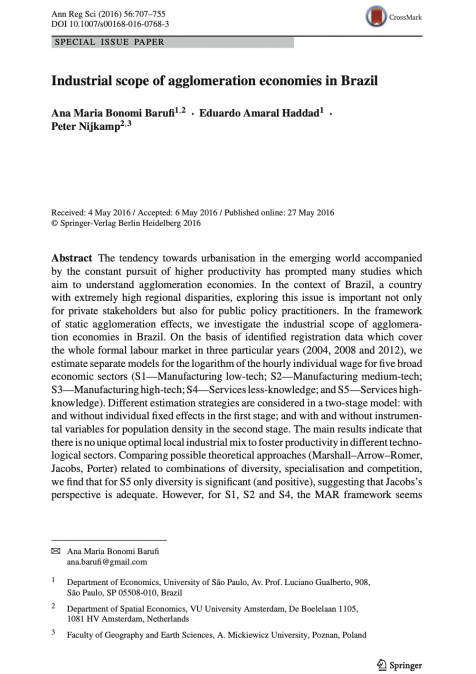Publications /
Paper in Academic Journals
Good connectivity within cities is an essential input for productivity and livability in cities, but the distributive impacts of improvements in within-city mobility are not well understood. This work aims at filling this gap by exploring the impacts of alternative infrastructure investments and mobility policies on economic growth, income distribution of households and internal distribution of economic activity. This paper focuses on the estimation of the impacts of transportation investments/policies using a spatial computable general equilibrium (SCGE) model integrated to a travel demand model, following the methodology presented in Haddad et al. (2015). In order to enhance our understanding of the distributional impacts of transportation improvements in Brazilian cities, we simulate the impact of different types of mobility investments in the São Paulo Metropolitan Region (SPMR). To explore further the income effects of infrastructure investments, we also conduct microsimulation exercises integrated to the SCGE results.












